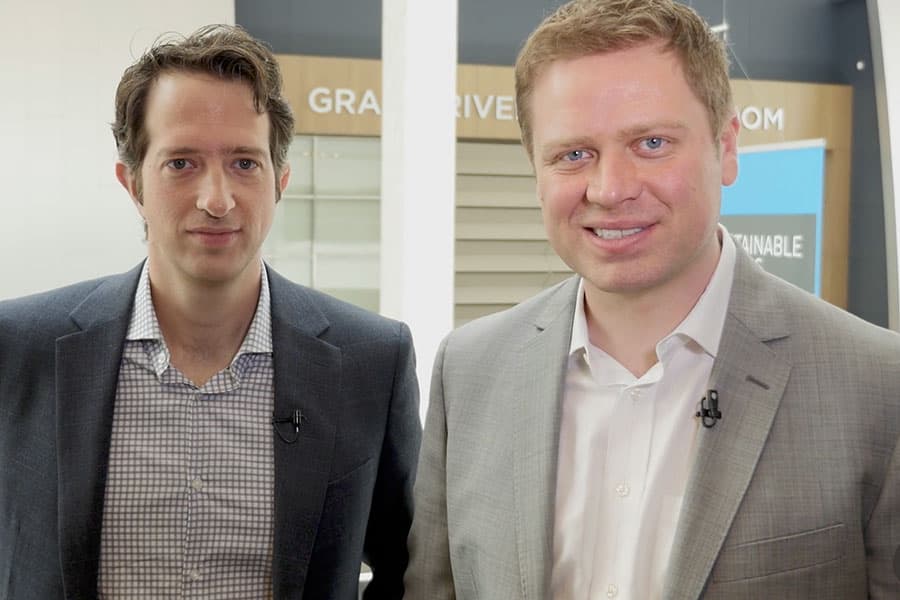How to facilitate discussion: an interactive workshop

- Location
- Nationwide
- Size
- 100+
- Use case
- Corporate learning & development
Jason Jay and Gabriel Grant help attendees break through gridlock using Poll Everywhere
Challenge:
Coach purpose-driven leaders on how to break through gridlock at school, at work, or at home.
Solution:
Hold an interactive workshop on how to facilitate a discussion, using Poll Everywhere to moderate.
Summary:
Jason Jay and Gabriel Grant use Poll Everywhere at their Breaking through Gridlock workshops to "help people discuss the undiscussable."
Few questions are more difficult to answer than "How can I incite change?" The answer will vary according to setting and circumstance. A civics teacher trying to facilitate a polarizing discussion and a manager trying to pitch a new project will tackle their respective problems in very different ways.
Both the teacher and the manager, however, will likely face opposition. When that happens, the path forward is more similar than not. Breaking through that gridlock is, fundamentally, a matter of having more productive conversations.
How do you effectively facilitate a discussion?
Jason Jay and Gabriel Grant teach the art of productive conversation to purpose-driven leaders through Breaking Through Gridlock, which is both a book and an interactive workshop. Breaking Through Gridlock is a framework for breaking conversation down to its fundamental elements, then applying the lessons learned to drive larger, more difficult conversations.
Jason, a director at the MIT Sloan School of Management, says these workshops start with "our own experience, our own interests, and our own mistakes and mess-ups."
Then, Poll Everywhere helps move the conversation forward.
Deploy open-ended polls to make sure no one gets left behind
At a Breaking Through Gridlock workshop in Detroit, Jason and Gabriel invite attendees to think of specific, personal conversations with coworkers or family members that have ended in gridlock. With those examples in mind, Jason and Gabriel activate an open-ended poll, asking attendees a simple but difficult question...
What are you thinking and feeling about the other person but not saying?
… and the responses are illuminating:
You're pretending to care/humoring me.
Why don't you practice what you preach?
You care more about perceptions than what matters.

Next, Jason and Gabriel dissect those responses and workshop a more productive conversation. The lessons learned are then applied to a conversation attendees would like to have with a specific person.
Some attendees are a bit vague with their choices, identifying "my core consumer" or "industry leaders." Jason coaxes them back to identifying a single, specific person, making the lesson more actionable.

"People aren't just listening to it conceptually or abstractly, but it's really applied to a particular context for action.” - JASON JAY Co-Author, Breaking Through Gridlock
Discussing the undiscussable
Gabriel, the CEO of Human Partners and cofounder of the Byron Fellowship Educational Foundation, has come to love the moment attendees finally break through.
“When they break through those conversations that seem most difficult to them, they get a boldness to talk to anybody, and to share what they care about. That’s just beautiful to watch,” Gabriel said.
Those breakthrough moments, and the conversations that result, can be world-changing. Jay and Grant have worked with — and therefore facilitated change in — purpose-driven leaders at companies like Whole Foods and Bose, who rave about the results.
Gabriel notes, too, that the success of the workshops would be difficult to achieve without Poll Everywhere.

“With Poll Everywhere, we can tell where we’re losing people, where people are getting lost… and speak to each of those people within the process because we can see the whole conversation. We don’t leave anybody behind.” - Gabriel Grant Co-Author, Breaking Through Gridlock
How can you do this?
Step 1
Create a free Poll Everywhere account.
Step 2
During your workshop, deploy anonymous, open-ended polls to encourage attendees to be more open and honest.
Step 3
Carefully study the responses, and use them both to guide the group conversation, and to identify where one-on-one coaching would be helpful.
Poll Everywhere for learning and development
Power your next professional development training with live audience feedback.